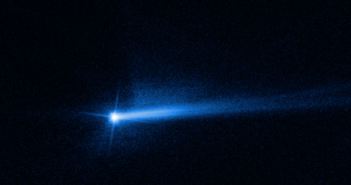
Features
Possibility of Detecting Clumsy Asteroids
After observing a planned impact between an asteroid and a spacecraft, astronomers wondered: could we detect colliding pairs of natural asteroids?

Astrobites
The Case of Shrinking Planets
Astrobites reports on whether photoevaporation or core-powered mass loss is more likely to be responsible for the exoplanet radius gap.

Features
Cosmic Rays Near and Far
How do cosmic rays move through the galaxy? Thanks to data collected by the aging Voyager 1 spacecraft, astronomers are closer to finding out.






